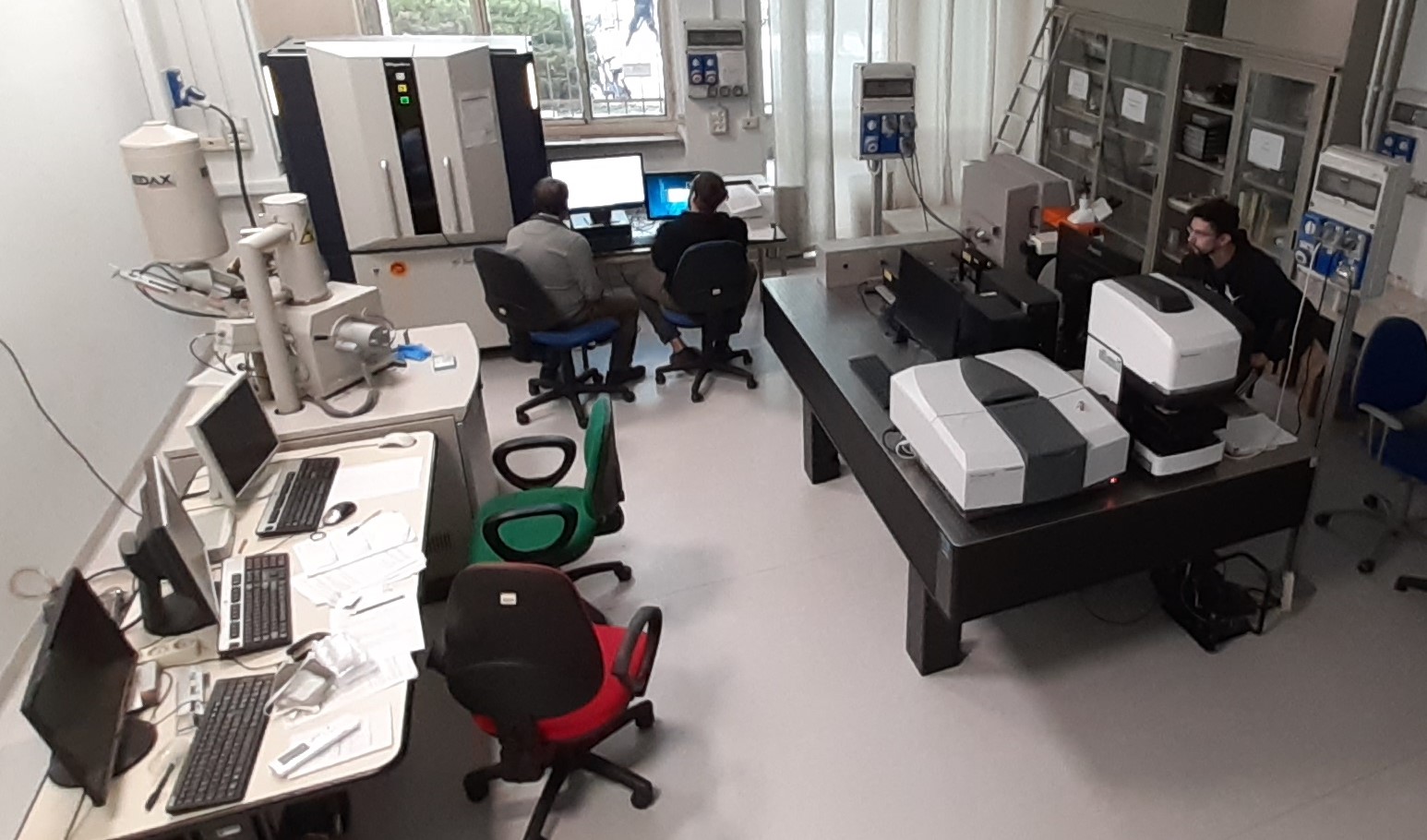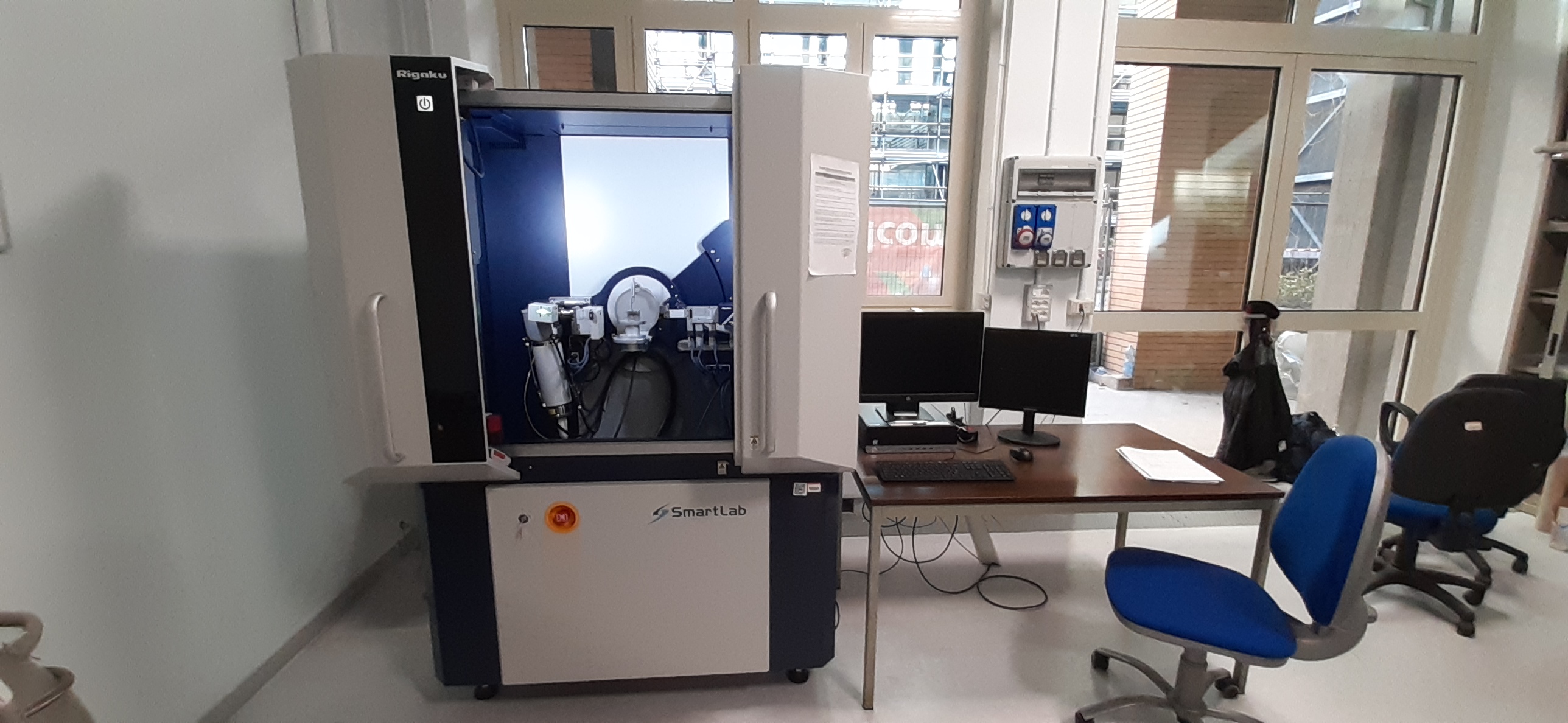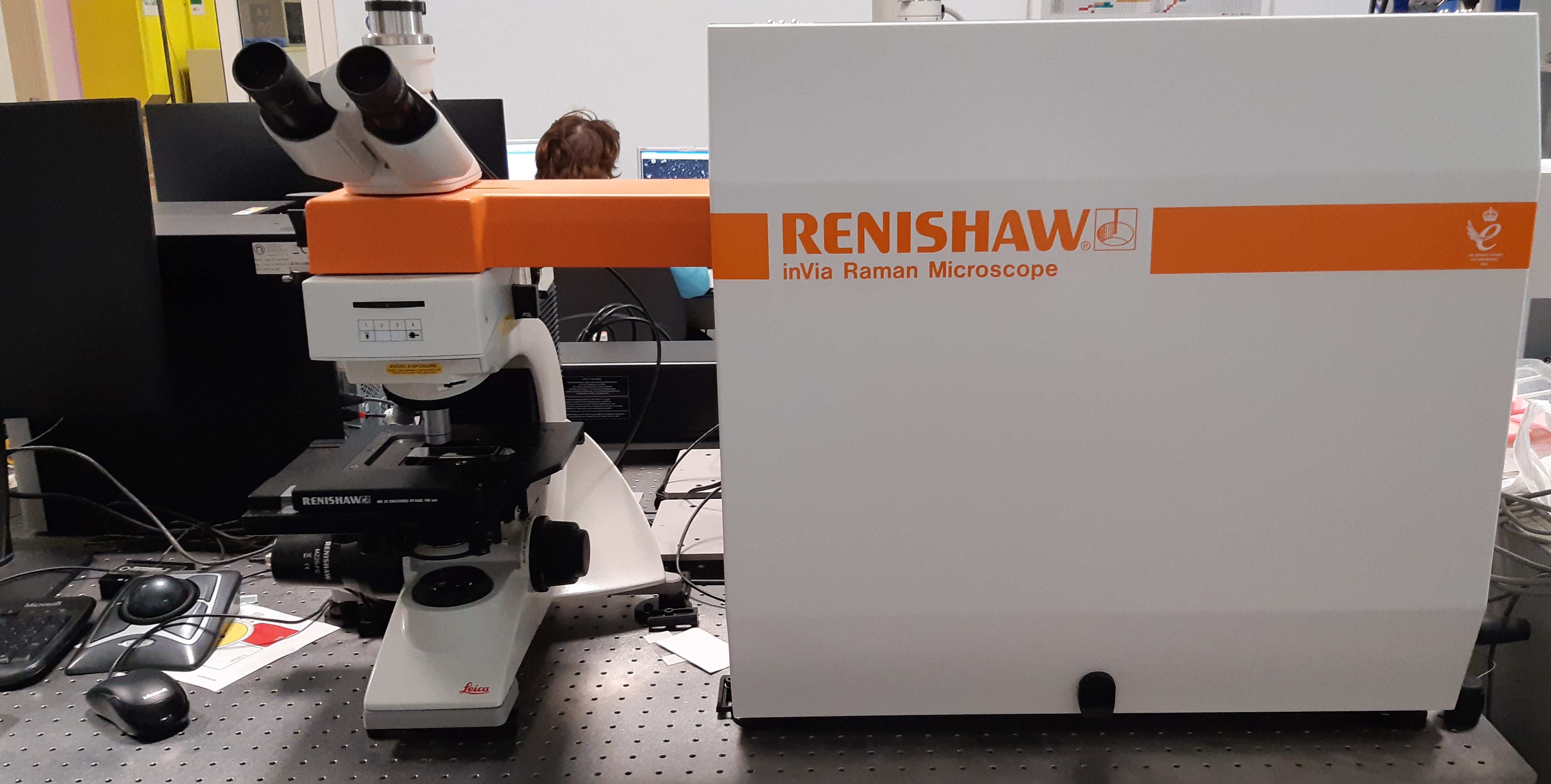



|
Our Multimodal Analyses Laboratory
(LAM) is equippped with new
generation instruments like SEM, Micro-Raman, FTIR and XRD.

Multimodal Analyses Lab
(LAM) in activity
X-Ray diffractometry The
X-ray diffraction is the ideal analysis method to obtain informations
about
crystalline
materials
structures
with
an atomic scale
and, as in our case, in minerals and rocks. In
particular, the powder diffraction allows to perform qualitative and
quantitative analysis of the mineralogical
composition of the material investigated.
From the diffractogram obtained we can acquire the following informations:
 Rigaku SmartLab
SE. Diffractometer
Our
laboratory is equipped with a recently manufactured Rigaku SmartLab SE and SmarLab Studio II software for
the analysis of the obtained spectra. The latter has the license to use
the PDF-4 database, issued by ICDD, useful for
qualitative and quantitative analyzes.
Raman Spectroscopy Raman
spectroscopy is an analysis technique that exploits the diffusion of a
monochromatic electromagnetic radiation by the analyzed sample. This
type of analysis is widely used in the study of solid state materials
(e.g. rocks, minerals, polymers) and liquid, it is a non-destructive,
fast and easily achievable technique without particular sample
preparation.
During the analysis the sample is hit by an electromagnetic radiation from a laser source, which interacting with the electrons of the molecules induces on them an electric dipole responsible for the diffusion process of the incident radiation. This phenomenon is represented through a spectrum that provides information on the structure of molecular vibrational energy levels. By comparing the experimental spectrum with a database it is possible to uniquely identify the nature of the material analyzed.  Confocal Renishaw microscope.
Our laboratory is equipped with an inVia™confocal Raman microscope
produced by Renishaw, with optics with 5x, 20x and 50x magnification
that allow an effective analysis of samples of geological or artificial
origin. Furthermore, the microscope can be used with reflected and
transmitted light, useful for the observation and point analysis of
thin sections.
Scanning Electron microscopy and EDX spectroscopy (SEM-EDX) The
electron microscope is a type of microscope that uses an electron beam
as a radiation source, unlike the optical microscope that uses light.
The electron beam having a very small length allows the electron
microscope to reach a very high resolution.
In the scanning electron microscope, the electron beam strikes the sample from which numerous particles are emitted, including secondary electrons; the latter are detected and converted into an electrical impulse. SEM is usually equipped with a probe to perform EDX (Energy Dispersive X-ray) spectroscopy analysis. EDX analysis is a non-destructive methodology that allows you to analyze solid conductive samples and obtain an elementary analysis, which allows you to detect the presence of elements even in small traces.  SEM FEI Company Inspect S
Fourier Transform Infrared Spectroscopy (FTIR) Infrared
spectroscopy or IR spectroscopy is an absorption spectroscopic
technique normally used for the characterization of materials. When an
infrared photon is absorbed by a molecule, it passes from its
fundamental vibrational state to an excited vibrational state. In a
typical infrared abscissa spectrum a scale of frequencies expressed in
wave number and in ordinate the percentage of transmittance is
indicated.
|
